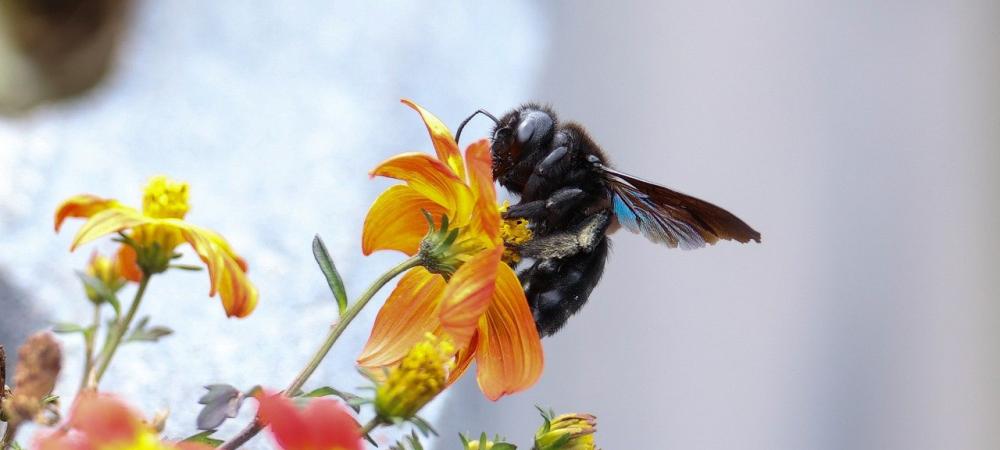Carpenter Bees in Greenville, SC: The Complete Guide

If you've ever noticed these buzzing creatures around your property in Greenville or are curious to learn more about them, you've come to the right place. Carpenter bees are intriguing insects that play a vital role in the local ecosystem, but they can also pose challenges for homeowners and gardeners.
What Are Carpenter Bees?
Carpenter bees are a group of solitary bees found in various parts of the world, including North America. They are called "carpenter bees" due to their nesting behavior, which involves excavating tunnels in wooden structures to create nests for their offspring. These bees are robust and often resemble bumblebees in appearance, but they have some distinct characteristics.
What Do Carpenter Bees Look Like?
Carpenter bees have distinct physical characteristics that set them apart from other bees. Here's how you can distinguish them:
- Size: Carpenter bees are relatively large, with adults ranging from 1/2 to 1 inch in length.
- Color: They have a robust and shiny black abdomen, often with shades of metallic blue or purple highlights.
- Head: Their head is black and may have yellow or white markings around the eyes and on the face.
- Thorax: The thorax is covered with black hairs and may also have yellow or white markings.
- Wings: Carpenter bees have transparent wings that are dark-tinted near the base.
- Abdomen: Their abdomen is smooth, shiny, and mostly hairless, distinguishing them from bumblebees.
- Resemblance to Bumblebees: Carpenter bees are often mistaken for bumblebees due to their similar size and coloration, but they lack the dense hair on their abdomen that bumblebees have.
Do Carpenter Bees Sting?
Yes, carpenter bees can sting, but they are not aggressive insects and rarely sting unless provoked or threatened. Only female carpenter bees possess stingers and use them as a defense mechanism when they feel their nest, or themselves are in danger.
Male carpenter bees, on the other hand, do not have stingers, so they cannot sting at all. They may be more curious and might hover around humans or other animals, but they are harmless.
Do Carpenter Bees Pollinate?
Yes, carpenter bees play an important role in pollination. Like many other bee species, carpenter bees are effective pollinators, and their foraging activities contribute to pollinating various plants and flowers.
What Do Carpenter Bees Eat?
Carpenter bees primarily feed on nectar but may also consume pollen to some extent. Here's a bulleted list describing what carpenter bees eat:
- Nectar: Carpenter bees are primarily nectar feeders. They visit flowers to collect nectar, which is their primary energy source.
- Pollen: While nectar is their main food source, carpenter bees may also collect pollen. They mix pollen with nectar to form a nutrient-rich substance called "bee bread," which is fed to their developing larvae.
- Honeydew: Occasionally, carpenter bees may consume honeydew, a sugary substance produced by aphids and other sap-sucking insects. They may feed on honeydew when nectar sources are scarce.
- Water: Like all insects, carpenter bees need water to survive. They obtain water from various sources, such as dew on leaves or puddles.
Do Carpenter Bees Eat Wood?
No, carpenter bees do not eat wood. Despite their name, carpenter bees do not consume wood as a food source. Instead, they are primarily nectar feeders and obtain energy from the sugary nectar in flowers.
How to Get Rid of Carpenter Bees
Getting rid of carpenter bees alone can be done using various methods. However, it's important to note that it's best to seek professional pest control if you have a large infestation or are unsure about dealing with bees. Here’s how you can do it on your own:
- Protective Gear: Wear appropriate protective clothing, including long sleeves, pants, gloves, and a beekeeper's veil, to avoid getting stung.
- Identify Nesting Sites: Locate carpenter bee nests around your property. Look for perfectly round holes in wood surfaces, such as eaves, railings, fascia boards, and other wooden structures.
- Use Insecticidal Sprays: Spray residual insecticides on the wooden surfaces where carpenter bees are active. Apply the spray in the early morning or late evening when the bees are less active.
- Seal Entry Holes: After treating the nests, plug the holes with wooden dowels or caulking to prevent re-infestation.
- Paint or Stain Wood Surfaces: Carpenter bees are less likely to attack painted or stained wood. Consider painting or staining wooden structures to deter them from nesting.
- Hang Fake Nests: Carpenter bees are territorial and may avoid areas with existing nests. Hang fake nests made of brown paper bags or other materials to discourage new infestations.
- Natural Repellents: Some natural repellents, such as citrus oil or almond oil, may help deter carpenter bees. Apply these substances to wooden surfaces to discourage nesting.
Carpenter Bee Treatment in Greenville, SC
If you’re in need of professional stinging insect control in Greenville, you’re in the right place. ProCore Pest Control provides same-day service when you call before noon, so we’ll solve your carpenter bee problems in no time. Don’t risk any more painful stings, and get a free estimate from us today.
